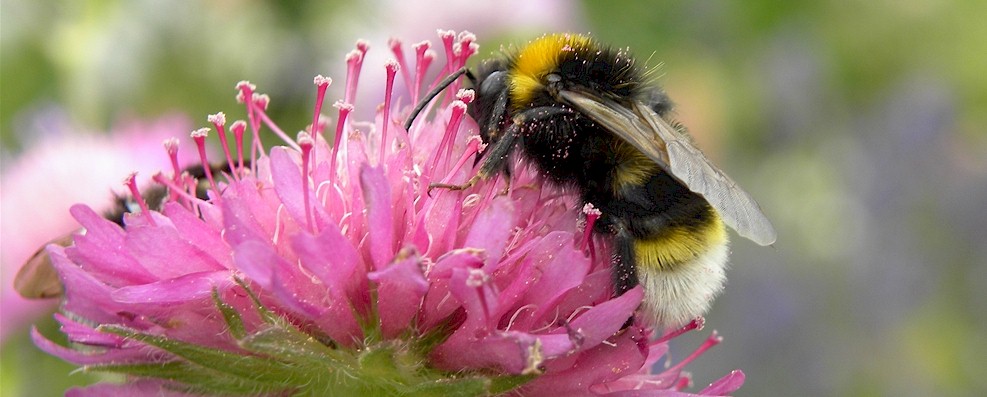|
All the insects
that visit your garden require food, and honey bees, solitary bees,
butterflies, some beetles, bumblebees and hoverflies as well as many
other insect species, use nectar and pollen as a food source. Many
traditional cottage garden plants have supplies of nectar
and pollen, but it is not always easy to obtain these old fashioned
plants - sometimes the best place to find them is in the garden of a
friend or neighbour. Garden Centres often concentrate on the latest
introductions, with bigger and showier flowers, and these are just the
kinds of plants that often have little or no nectar, or you may find
'wildlife-friendly' plants wrongly labelled as such. Harmful
insecticides may also have been used on some Garden Centre plants.
Good nectar
plants can be incorporated into many different situations in your
garden, especially if you have existing borders, and some are suitable
for containers. However you may want to look at a border specifically
for pollinators and a ‘nectar border’ is a brilliant way of helping a
large range of invertebrates. Also, a special nectar border is a way
of encouraging wildlife in a quite unobtrusive way, as by choosing the
plants that pollinators like, you can encourage them to visit the
garden without including habitats such as wildflower meadows which can
take up a lot of space. So a special border may be particularly
valuable in a smaller garden, or one where a more conventional look is
required. It is possible to create a cottage garden feel, where
every plant is a good nectar or pollen source. If you wish you
can also include plants with seeds to encourage birds. Your visiting
pollinators will also bring in bird species such as warblers, robins,
wrens and spotted flycatchers, as well as hedgehogs and other small
mammals.
Most wildlife
gardening books have lists of good nectar plants, but one of the best
ways of choosing plants is to use your own eyes when you are visiting
friends' gardens or gardens open to the public, and make to a note of
anything you see that seems to be attracting insects. Even a
visit to a Garden Centre can provide useful information if you look at
the
plants that insects are visiting. It is though worth remembering that nectar
production is dependant on the time of year, the weather, and even
the type of soil. A plant that may be brilliant in a garden you visit may
not be that great with you, so there is an element of trial and error.
However there
some plants that are guaranteed to bring butterflies, bumblebees,
honeybees and hoverflies to your garden. If I had to choose my top 10
nectar plants for pollinators from my own garden borders, that list
would include buddleia, lavender, scabious, globe thistle, catmint,
borage and
verbena, plus the wildflowers vipers bugloss, marjoram and purple
loosestrife. There are many other good plants for pollinators but
remember that
a mix of natives and non natives will really get your borders buzzing. The
links below will help you to find plants that will encourage many
different types of pollinator.
|

